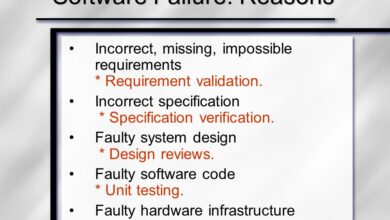Safeguarding Your Digital Assets: A Comprehensive Guide to Data Loss Prevention in the Cloud

In today’s interconnected digital landscape, businesses and individuals alike rely heavily on cloud services for data storage, accessibility, and collaboration. While the cloud offers unparalleled convenience, it also introduces new challenges, particularly when it comes to data security. Data loss can have severe consequences, ranging from financial losses to reputational damage. This makes implementing robust data loss prevention (DLP) strategies crucial for anyone leveraging cloud technology.
Data loss prevention (DLP) in the cloud is a critical aspect of modern cybersecurity, given the increasing reliance on cloud services for data storage and collaboration. Cloud environments introduce unique challenges, such as data accessibility, encryption management, insider threats, and compliance concerns. To address these challenges, organizations must implement comprehensive strategies that blend advanced technologies with user education. Encryption plays a pivotal role in securing data both in transit and at rest, ensuring that even if unauthorized access occurs, the information remains unreadable.
User education and training are equally important, as human errors remain a significant risk. Robust access controls, multi-factor authentication, and continuous monitoring of user activities are essential for preventing unauthorized access. Automated tools for data classification aid in focusing protection efforts on the most critical information, while regular backups and a well-defined incident response plan provide a safety net in case of data loss. In the dynamic landscape of cloud computing, a holistic approach to data loss prevention for cloud is imperative, ensuring the confidentiality and integrity of digital assets.
Understanding Data Loss:
Data loss can occur through various means, including accidental deletion, hardware failures, cyberattacks, and insider threats. When data is stored in the cloud, the responsibility for its protection is shared between the service provider and the user. Cloud service providers implement security measures to safeguard infrastructure, but users must take proactive steps to secure their data within the cloud environment.
Key Challenges in Cloud Data Loss Prevention:
Data Accessibility and Sharing:
- Cloud services thrive on collaboration and sharing, allowing users to access and edit files from anywhere. However, this flexibility also poses a challenge for DLP, as sensitive information may be inadvertently shared or accessed by unauthorized individuals.
Encryption and Decryption:
- While encryption is a fundamental aspect of cloud security, managing encryption keys and ensuring seamless decryption for authorized users can be complex. Mismanagement of encryption keys can lead to data being inaccessible or compromised.
Insider Threats:
- The cloud environment is not immune to insider threats, where employees or individuals with access to sensitive data misuse or mishandle information. Preventing such incidents requires a combination of technological solutions and effective user education.
Compliance Concerns:
- Different industries and regions have specific data protection regulations. Ensuring compliance with these regulations in a cloud environment adds an extra layer of complexity to data loss prevention efforts.
Effective Data Loss Prevention Strategies:
Comprehensive Encryption:
- Implement end-to-end encryption to protect data both in transit and at rest. This ensures that even if unauthorized access occurs, the information remains unreadable without the proper decryption keys.
User Education and Training:
- Users are often the weakest link in data security. Regular training sessions on security best practices, recognizing phishing attempts, and understanding the importance of data protection can significantly reduce the risk of human errors.
Access Controls and Authentication:
- Implement robust access controls to restrict data access based on user roles and responsibilities. Multi-factor authentication adds an extra layer of security by requiring users to provide additional verification beyond just a password.
Monitoring and Auditing:
- Utilize monitoring tools to keep track of user activities within the cloud environment. Regular audits can help identify any suspicious behavior or potential security incidents before they escalate.
Data Classification:
- Classify data based on sensitivity levels. This allows organizations to focus their DLP efforts on protecting the most critical information. Automated tools can help classify and tag data, making it easier to enforce security policies.
Regular Backups:
- Implement a robust backup strategy to ensure that even in the event of data loss, critical information can be recovered. Regularly test the restoration process to guarantee its effectiveness.
Incident Response Plan:
- Develop a comprehensive incident response plan to address any data loss incidents promptly. This includes identifying the root cause, containing the impact, and implementing preventive measures to avoid similar incidents in the future.
Conclusion:
As businesses increasingly rely on cloud services, the importance of effective data loss prevention strategies cannot be overstated. The evolving threat landscape requires a proactive and dynamic approach to safeguarding sensitive information stored in the cloud. By combining advanced technological solutions with user education and strict access controls, organizations can minimize the risk of data loss and ensure the integrity and confidentiality of their digital assets. Embracing a comprehensive data loss prevention strategy is not just a necessity in today’s digital age – it’s a fundamental responsibility for anyone entrusted with sensitive information in the cloud.



